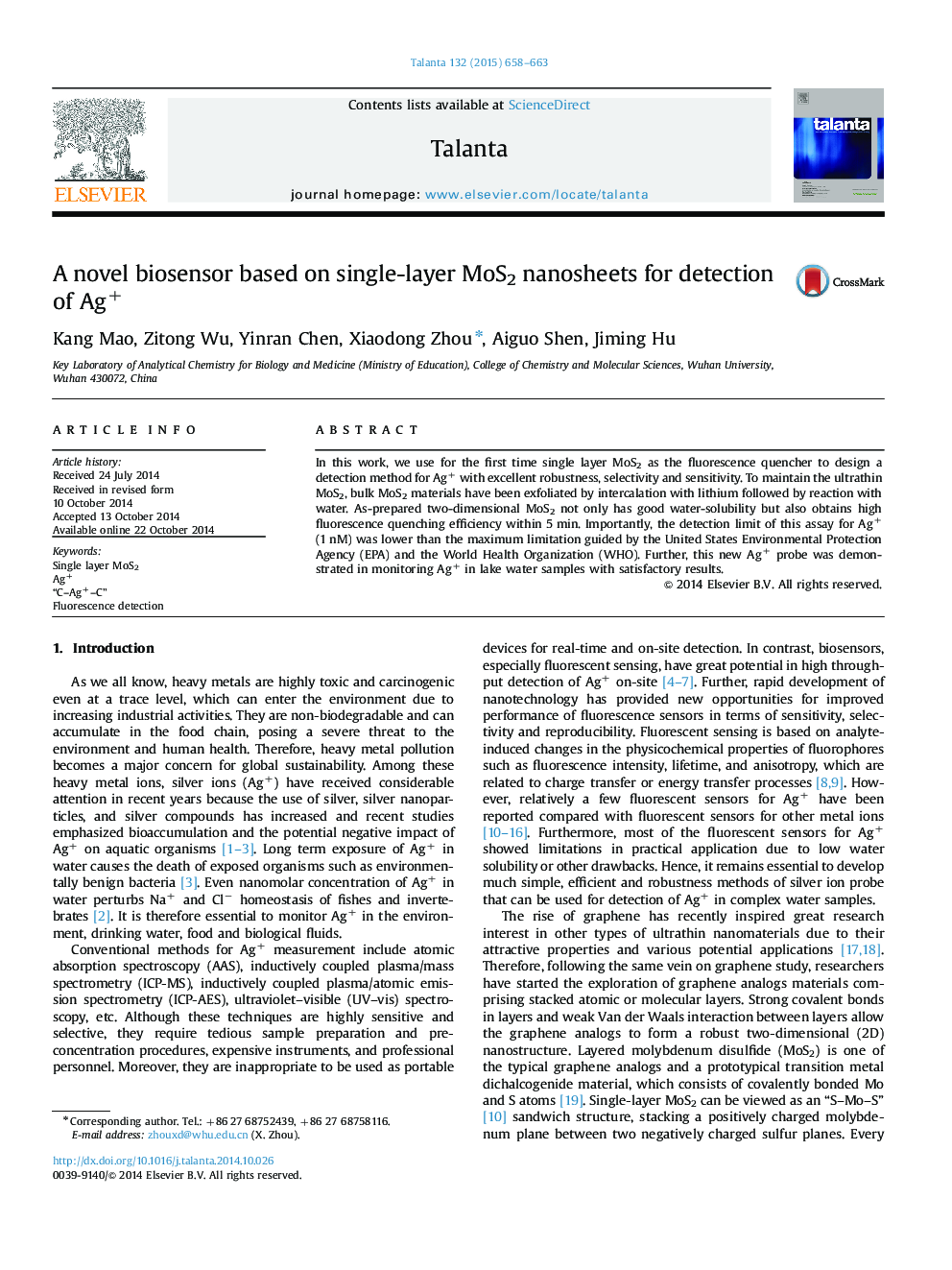| Article ID | Journal | Published Year | Pages | File Type |
|---|---|---|---|---|
| 1242069 | Talanta | 2015 | 6 Pages |
•A novel Ag+ probe with excellent robustness, selectivity and sensitivity was successfully developed.•Good water-solubility and high fluorescence quenching efficiency single MoS2 is used for the first time for Ag+ detection.•This Ag+ probe was demonstrated in monitoring Ag+ in practical samples with satisfactory results.•The Ag+ detection method is low-cost and simple.
In this work, we use for the first time single layer MoS2 as the fluorescence quencher to design a detection method for Ag+ with excellent robustness, selectivity and sensitivity. To maintain the ultrathin MoS2, bulk MoS2 materials have been exfoliated by intercalation with lithium followed by reaction with water. As-prepared two-dimensional MoS2 not only has good water-solubility but also obtains high fluorescence quenching efficiency within 5 min. Importantly, the detection limit of this assay for Ag+ (1 nM) was lower than the maximum limitation guided by the United States Environmental Protection Agency (EPA) and the World Health Organization (WHO). Further, this new Ag+ probe was demonstrated in monitoring Ag+ in lake water samples with satisfactory results.
Graphical abstractAbove scheme shows the illustration of fabrication of the assay for Ag+ on single layer MoS2. A fluorescein isothiocyanate (FITC)-labeled Ag+ specific oligonucleotide, rich in cytosine, was employed as the fluorescent probe in sensing targets. The conformation of the probe changed from random coil ssDNA to straight stiff dsDNA with “C–Ag+–C” base pairs followed by the addition of Ag+. When FITC-labeled DNA probe was in the state of random coil ssDNA, FRET from FITC-ssDNA to single layer MoS2 occurred because the distance from the energy donor FITC to the energy acceptor single layer MoS2 was shortened by the special p-type nature of ultrathin MoS2 material and Van der Waals forces between nucleotide bases and single layer MoS2. But when the DNA probe was in formation of dsDNA, the energy donor FITC was far away from the surface of single layer MoS2 and FRET disappeared. So, the introduction of enough amounts of Ag+ led to a large degree of fluorescence recovery, and the degree of fluorescence quenching was closely related to the amount of added Ag+ in certain linear range.Figure optionsDownload full-size imageDownload as PowerPoint slide
